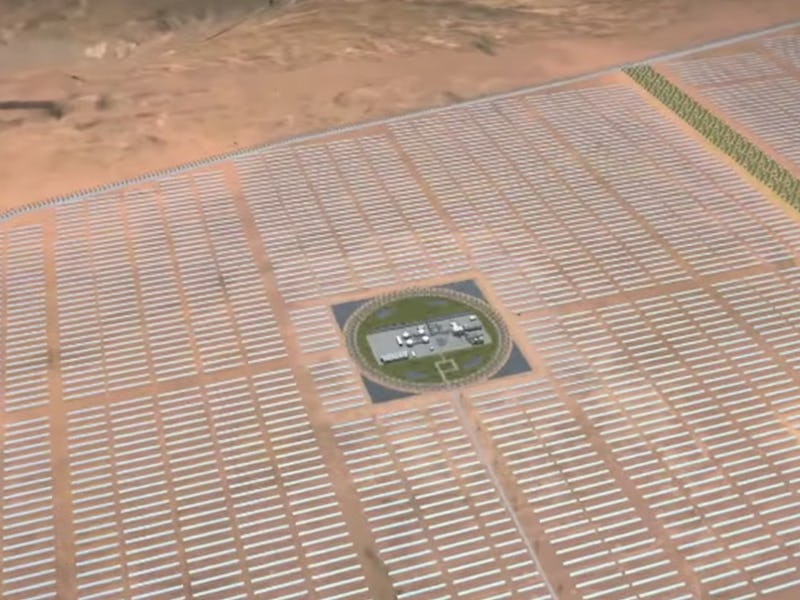The World's Largest Solar Plant Has Been Activated in Morocco
Yes, you can see it from space.

The Sahara may be one of the most inhospitable places on Earth, but it has sunlight in abundance.
It now looks like Morocco will put that natural resource to good use by building the world’s largest solar plant near a town called Ouarzazate on the desert’s outskirts. The first stage, Noor 1, that launched this week, covers 6,178 acres, almost 10 square miles, and already produces 160 megawatts (MW) at its peak, enough energy for 650,000 locals.
When Noor 2 and Noor 3 go online in 2017, the Ouarzazate solar power station will be the world’s largest solar array. It will be capable of generating 580 MW and will cover an area roughly the size of the capital of Morocco itself.
The plant is a central component of Morocco’s ambitious energy agenda that calls for moving 42 percent of the country’s energy use to renewables by 2020. The successful unveiling of Noor 1 will also add credibility to Morocco’s status as host of the world’s next major climate conference in November. The meeting could see the country commit to shifting over half of its energy sources to renewables by 2030.
The plant also creatively solves the fundamental problem of solar energy: What to do when the big light in the sky goes off at night. Batteries just aren’t developed enough to make energy storage feasible and efficient — yet. This creates a major headache that kills many solar projects before they get off the ground (or onto it, as the case may be).
Morocco uses one of the most advanced techniques available. The massive solar arrays direct the sun’s light onto liquid-filled pipes that can reach 393 degrees Celsius (739 Fahrenheit), converting water to steam, and spinning a turbine that generates electricity. The crescent-shaped panels also tilt with the day’s sun, tracking it across the sky for greatest efficiency.
Luckily, the process doesn’t stop at night, because the salt in the water stores the heat from the day’s sun, allowing it to continue producing steam and spinning the turbine.
The first stage, Noor 1, of the vast solar complex will only be able to keep producing energy for three hours after the sun goes down. However, once the whole station is online, Ouarzazate should be pumping out clean, renewable energy 20 hours a day.
Morocco is hardly the only country moving forward with large solar projects, but its status not only as a global leader but also as one of the first African countries to go big on the sun represents a turning point in the renewables industry. In fact, the African Development Bank provided key funding that allowed construction to go ahead.
Before the plant went online, Morocco was importing as much as 97 percent of its energy, a tenuously unstable position for a developing nation, particularly given the wildly fluctuating prices of fossil fuels.
All this renewable energy, sustainable futures stuff is well and good. But everyone knows that the best part about having the world’s largest solar station is that you can see it from space:
The plan in December 2015, as seen by the Operational Land Imager (OLI) on Landsat 8.